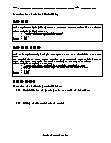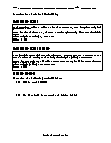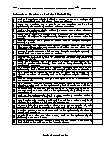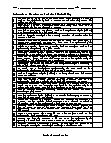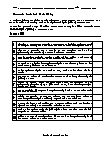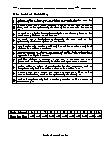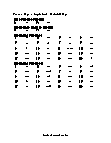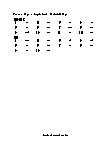Empirical Probability Worksheets
What is Empirical Probability? The probability is defined as the likelihood of occurrence of an event. Probability can be written in the form of decimals or fractions. When expressed in decimal form, probability ranges from 0 to 1. If an event has a probability of 0, that means there are no chances of occurrence of that particular event. However, if the event has a probability of 1, then it means that the particular will occur. When the probability is closer to 1, then the event is likely to happen, and when the probability is closer to 0, then it is less likely that an event would happen. For instance, an event with a probability of 0.85 is more likely to happen than an event with a probability of 0.12. Empirical probability is found by conducting experiments and through observations. The likelihood that the event will happen is based on the results obtained from the collected data. The mathematical formula for finding empirical probability is written as: Empirical Probability = Number of times an event can take place/ total number of trials. For instance, a fair die is rolled 120 times, and you to find out the number of times 5 turned up. We know that each number on the die has an equal probability of 1/6. Therefore, the probability of 5 turning up is also 1/6. So, we will calculate 120 x 1/6= 20. The probability of 5 is 20 out of 120.
-
Basic Lesson
Guides students through the beginner skills of Empirical Probability. What is the probability that you will pick an ace in a row out of a 52- card deck? One card out of 52 cards can be selected in 52 different ways. Out of these 52 cases four cases will favor the event selecting an ace (any card from 4) Probability of selecting a Club card
View worksheet -
Intermediate Lesson
Demonstrates how to use advanced skills to tackle Empirical Probability problems. A large bag of balls contains 3 orange balls, 6 blue balls and 8 red balls. If a ball is chosen at random, what is the probability of getting a blue ball? Divide the number of ways to choose a blue ball (6) by the total number of balls (17) in a bag = 6/17. Probability of getting a red ball= 6/17.
View worksheet -
Independent Practice 1
A really great activity for allowing students to understand the concepts of the Empirical Probability. In a factory, 240 monitors were checked, out of which 10 were found to be defective. How many defective monitors can be found in a sample of 720 monitors?
View worksheet -
Independent Practice 2
Students use Empirical Probability in 20 assorted problems. The answers can be found below.
View worksheet -
Homework Worksheet
Students are provided with 12 problems to achieve the concepts of Empirical Probability.
View worksheet
Archimedes About Geometry
I am persuaded that this method [for calculating the volume of a sphere] will be of no little service to mathematics. For I foresee that once it is understood and established, it will be used to discover other theorems which have not yet occurred to me, by other mathematicians, now living or yet unborn.
